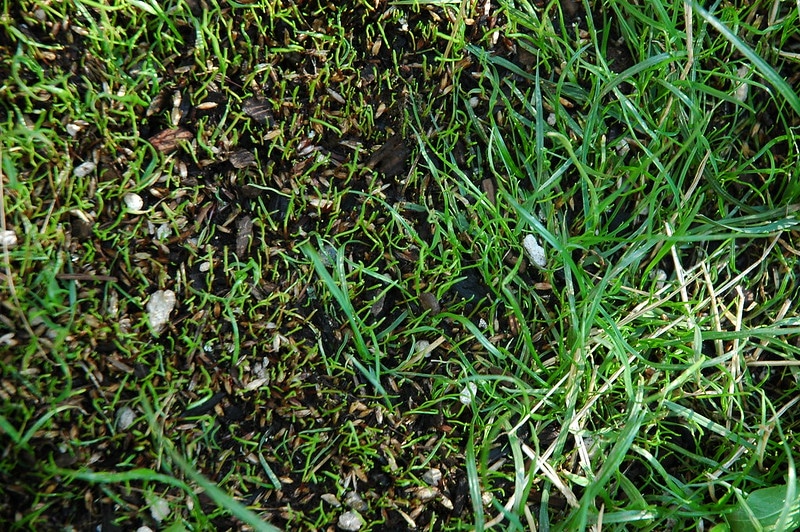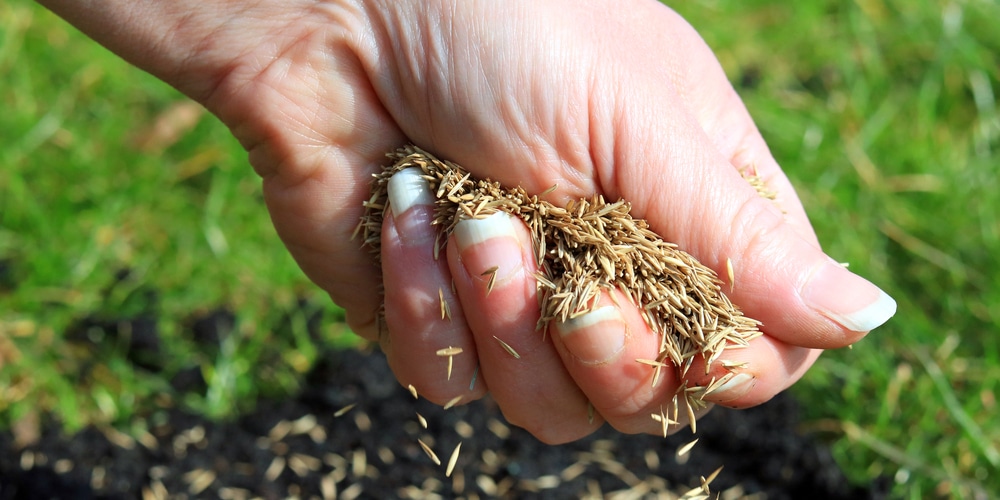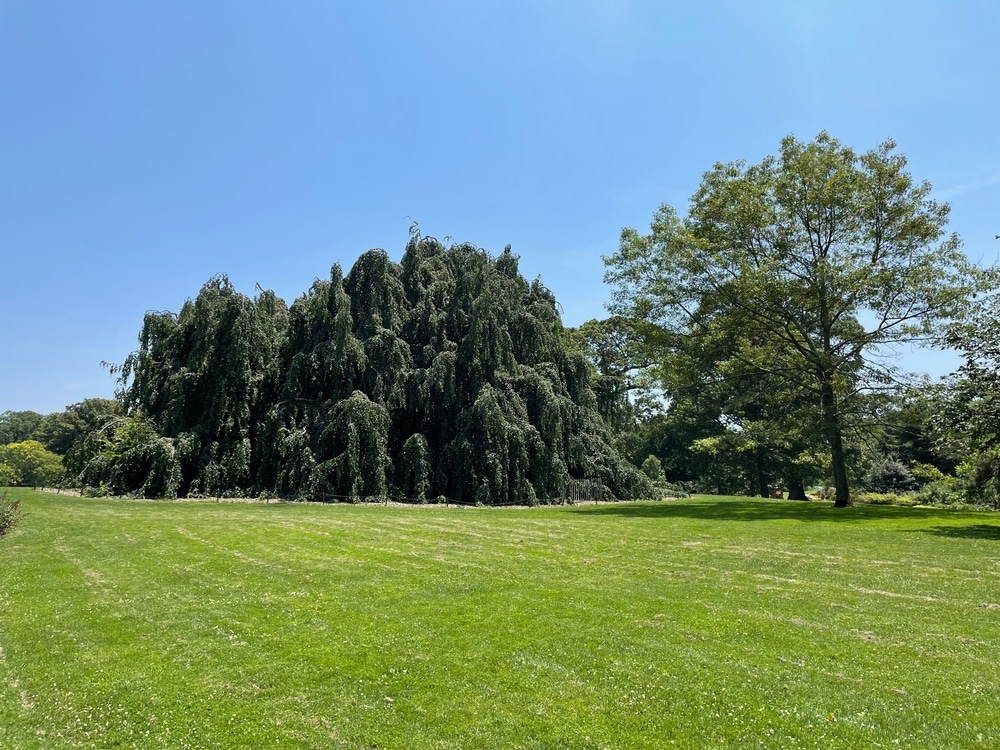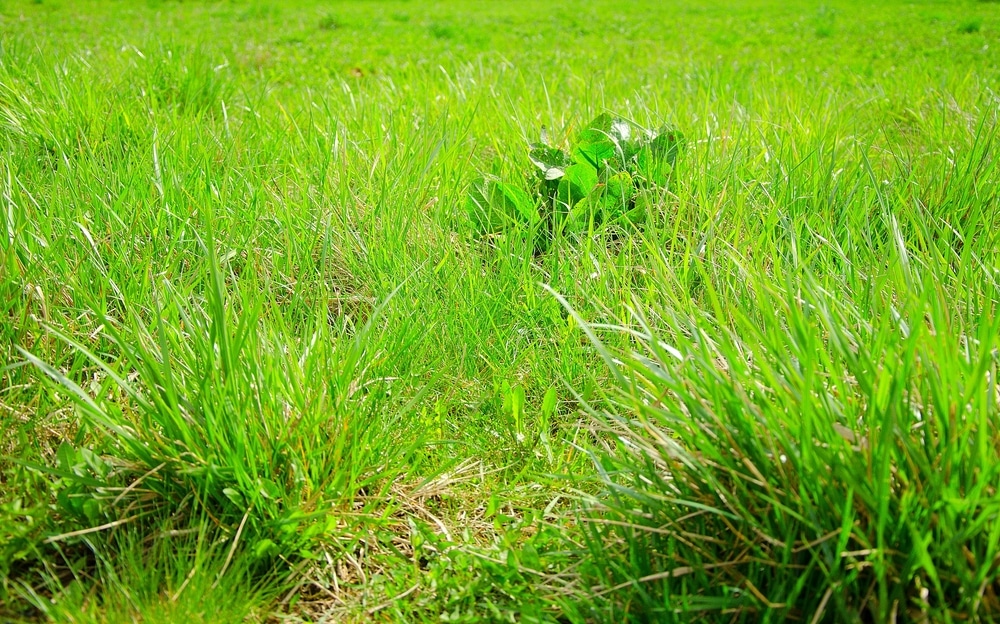Overseeding: The Path to a Lusher Lawn
Overseeding is the process of planting new grass seeds into your existing lawn without tearing up the soil or grass. It’s a powerful way to revitalize your lawn, ensuring it stays dense, healthy, and visually appealing.
Benefits of Overseeding
- Combat Lawn Wear: Over time, lawns can become thin or damaged due to traffic, pets, and weather.
- Overseeding introduces new grass that can withstand these conditions, promoting a resilient turf.
- Enhance Lawn Appearance: Your lawn can suffer from fading and discoloration.
- Adding fresh seeds through overseeding can breathe life back into your lawn, restoring its lush, vibrant color.
- Reduce Weeds: A thick lawn from overseeding leaves little room for weeds to grow, thus naturally reducing the need for herbicides.
Best Time to Overseed
- Cool-Season Grasses: For optimal results, overseed cool-season grasses in early fall or early spring.
- Warm-Season Grasses: Late spring or early summer is the perfect window for overseeding warm-season grasses.
Timing is crucial — overseeding when temperatures are mild ensures better seed germination and establishment.
Grass Types for Overseeding
Selecting the correct type of grass seed is critical for successful overseeding. Consider:
- Climate Compatibility: Choose grass types suited to your local climate for the best growth.
- Sun and Shade Tolerance: Match the grass type with the amount of sunlight your lawn receives.
Here are grass types commonly used for overseeding:
- For Cool Climates: Perennial ryegrass, fine fescue, and Kentucky bluegrass are excellent choices.
- For Warm Climates: Bermuda grass, zoysia, and centipede grass adapt well to warmer environments.
Remember, matching the new seed with your current lawn type promotes a uniform look and prevents patchiness.
Preparing Your Lawn
To achieve a lush and vibrant lawn through overseeding, it’s essential to start with thorough preparation, setting the stage for seed-to-soil contact and a successful germination process.
Assessing Lawn Condition
Before you begin overseeding, evaluate the current state of your lawn. Look for areas that are thinning or have bare spots which will benefit most from overseeding.
- Identify problem areas: Where is the grass thinning?
- Check for pests: Are there signs of insect damage?
- Weed assessment: Is the lawn riddled with unwanted plants?
Soil Testing and Amendment
A soil test is a critical next step to ensure the nutrients and pH level are conducive for new growth.
- Test your soil: This will give you valuable information on pH levels and nutrient deficiencies.
- Amend the soil: Add the necessary fertilizers or soil conditioners as recommended by the soil test results.
Lawn Mowing and Dethatching
Mow your lawn to the lowest recommended setting for your grass type to improve seed-to-soil contact.
- Mow short: But avoid scalping the lawn, which can cause stress and damage to the grass.
- Dethatch as needed: Use a dethatching rake or machine to remove thatch layers thicker than 1/2 inch.
Executing the Overseeding Process
Once you’ve mowed and prepared your lawn, overseeding can begin. This stage is critical to ensure your efforts result in a thick, healthy lawn. The following steps break down the complexities into actionable and precise tasks.
Seed Selection and Calculation
- Identify the Best Seed: Choose a grass variety that suits your climate, soil type, and sun exposure. Consulting a local lawn care expert can point you in the right direction.
- Calculate Seed Need: The amount of seed you need depends on your lawn size. Use a simple formula: lawn area (in square feet) × overseeding rate (per 1000 square feet) to determine the total pounds of seed required.
Seeding Techniques
- Equipment: Use a broadcast or drop spreader to distribute seeds evenly. Calibrate your spreader to match the seeding rate specified for the grass variety.
- Application Pattern: Apply half the seed walking north-south and the rest going east-west to achieve uniform coverage. Bob Vila’s step-by-step guide is a helpful resource for understanding the technique in detail.
- Integrating Seed: After spreading the seed, lightly rake the area to ensure good soil contact, which is vital for germination.
Watering and Fertilizing Post-Overseeding
- Watering Schedule: Keep your lawn moist by watering lightly twice a day for the first few weeks until seeds germinate. Gradually reduce watering frequency as the new grass establishes.
- Fertilizing: Apply a starter fertilizer immediately after seeding to provide essential nutrients. After four to six weeks, follow up with another application to support robust growth.
Lawn Maintenance After Overseeding
Once your lawn has been overseeded, proper maintenance is crucial to ensuring the new grass seeds germinate and establish themselves successfully. Focus on implementing specific mowing strategies, maintaining a consistent watering regimen, and applying fertilizers and weed control at the right stages.
Mowing Strategies
- Preparation: Mow your existing lawn to a lower height before overseeding to improve seed contact with the soil.
- Post-Overseeding: Wait until your new grass reaches 3 inches in height before mowing it for the first time to prevent uprooting.
- For further guidance on when to mow and set blade height, consider consulting professionals, like those from TruGreen
Watering Regimen
- Initial Watering: Water your lawn immediately after overseeding to enhance soil moisture and seed germination.
- Frequency: Keep the top inch of soil moist by watering your lawn once or twice daily for the first 14 days, reducing the frequency as grass matures.
- Amount: Ensure that your soil remains consistently wet, but not oversaturated, to foster healthy root development. For specifics on watering amounts and techniques, refer to the advice from Sharp Lawn Care.
Fertilizer and Weed Control
- Fertilizer Application: Apply a starter fertilizer with the appropriate nutrients to promote vigorous root growth and seedling development.
- Weed Control: Postpone the application of weed control products until your new grass has been mowed at least three times to avoid damage to tender sprouts.
- Timing and Products: Choose products tailored for newly overseeded lawns, and always adhere to the manufacturer’s recommendations for timing and application rates. Detailed product choices are available through resources like Jonathan Green.
Troubleshooting Overseeding Challenges
In your quest for a denser lawn, you may encounter various hurdles. If you find your grass growing patchy, diseases arising, or soil compaction, these focused strategies can help address them.
Dealing with Patchy Growth
- Causes: Patchy growth can be due to inadequate seed-to-soil contact, insufficient watering, poor seed quality, or incorrect timing.
- Solutions:
- Enhance Seed Contact: Ensure the seeds are properly raked into the soil for better germination rates.
- Regular Watering: Maintain consistent moisture levels without overwatering to encourage uniform growth.
- Seed Choice: Select high-quality seeds suited for your climate from a reliable provider, as seen on Garden Lawncare Guy.
Preventing and Addressing Diseases
- Preventive Measures:
- Test soil pH and amend accordingly to avoid fostering disease-prone environments.
- Use disease-resistant seed varieties when possible.
- Avoid overwatering and ensure good drainage to deter fungal growth.
- Management Strategies:
- If an outbreak occurs, promptly apply appropriate fungicides, following label instructions for usage.
- Consider advice from TruGreen on lawn treatments post-infection recovery.
Soil Compaction Problems
- Signs of Compaction:
- Water pooling on the surface.
- Difficulty inserting a soil probe or screwdriver into the ground.
- Grass struggling to root deeply.
- Remediation Techniques:
- Aeration: Use a core aerator to relieve compaction before overseeding.
- Topdressing: Apply a thin layer of compost or quality topsoil after aeration.
- For further guidance, Jonathan Green’s Guide offers a complete overview on soil preparation before overseeding.
Frequently Asked Questions
In this section, you’ll find answers to common queries on optimizing the process of overseeding your lawn to ensure stronger, healthier growth.
When is the optimal season for overseeding a lawn?
The best time for overseeding is typically during the fall, when the temperatures are moderate and there’s ample rainfall to support new seed growth.
This cooler climate reduces the stress on new seedlings and less competition from weeds.
Which type of grass seed is recommended for use after aerating a lawn?
After aerating, it’s best to use a grass seed that is compatible with your existing lawn.
For cool-season grasses, options like Kentucky bluegrass, tall fescue, and perennial ryegrass are commonly recommended.
What steps are involved in preparing a lawn for aeration and overseeding?
- Mow your lawn to a shorter height to improve seed-to-soil contact.
- Aerate the lawn to reduce soil compaction and enhance nutrient, water, and oxygen absorption.
- Remove excess thatch to allow new seeds to reach the soil effectively.
Are there benefits to aeration and overseeding a lawn, and if so, what are they?
Definitely, both aeration and overseeding offer several benefits:
- Aeration alleviates soil compaction, improving root penetration and strengthening your lawn’s resilience.
- Overseeding introduces new grass to thinning areas for a denser, more vigorous appearance.
What are the visible improvements to expect after aerating and overseeding a lawn?
After proper aeration and overseeding, you can expect:
- Enhanced thickness creating a lush, robust lawn.
- Improved lawn health and reduced bare spots, leading to a more uniform appearance.
Is it necessary to aerate a lawn prior to overseeding, or can overseeding be done without aeration?
Aeration prior to overseeding is not mandatory but highly beneficial. It allows for better seed-to-soil contact and encourages stronger seedling growth.
Overseeding without aeration is possible but may not yield the same significant results.
Last update on 2024-05-01 / Affiliate links / Images from Amazon Product Advertising API






